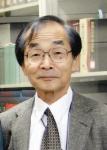Org. Synth. 2011, 88, 207-211
DOI: 10.15227/orgsyn.088.0207
Discussion Addendum for: PALLADIUM(0)-CATALYZED REACTION OF 9-ALKYL-9-BORABICYCLO[3.3.1]NONANE WITH 1-BROMO-1-PHENYLTHIOETHENE: 4-(3-CYCLOHEXENYL)-2-PHENYLTHIO-1-BUTENE
Submitted by Norio Miyaura
†
Discussion
The cross-coupling reactions of organoboron compounds have proved to be a general method for a wide range of selective carbon-carbon bond forming reactions.
1 In 1989, the cross-coupling reaction of 9-alkyl-9-BBN with 1-alkenyl and aryl halides or triflates was found to proceed smoothly in the presence of PdCl
2(dppf) and K
3PO
4•nH
2O.
2 This coupling reaction of B-alkyl compounds has been reviewed.
3
,
4 The reaction is limited to
primary alkylboranes; hydroboration of terminal alkenes with 9-BBN is the most convenient way to furnish the desired boron reagents.The reaction is catalyzed by PdCl
2(dppf),
2 PdCl
2(dppf)/2Ph
3As,
5 or other palladium-phosphine complexes in the presence of a base (Table 1).Since the presence of water greatly accelerates the reaction, the use of the hydrate of inorganic bases such as K
3PO
4•nH
2O (entry 1) or aqueous bases (entries 2 and 4) is generally recommended.
5 On the other hand, solid sodium methoxide added to 9-alkyl-9-BBN dissolves in THF by forming the corresponding ate-complex, which enables room temperature coupling under non-aqueous conditions (entries 3 and 5).
2 Treatment of 9-methoxy-9-BBN with
primary-alkyllithiums is an alternative for
in situ preparation of analogous boron ate-complexes.
6 The presence of KBr (1 equiv) is often critical to prevent decomposition of the catalyst for reactions of aryl and 1-alkenyl triflates (entry 6).
7
Sp
3-sp
3 bond formation between two alkyl derivatives has been much less successful among the possible combinations of different-type nucleophiles and electrophiles.Difficulties arise from the oxidative addition of haloalkanes (RCH
2CH
2X) to a palladium(0) complex due to accompanying formation of RCH=CH
2 and RCH
2CH
3 and from the susceptibility of alkylpalladium(II) intermediates to β-hydride elimination.
8 In spite of these difficulties, sp
3-sp
3 bond formation occurs smoothly between
primary-alkyl halides and
primary-alkylboron compounds where each reactant possesses β-hydrogen (entries 8 and 9).
9 The coupling with secondary alkyl halides has been limited to cyclopropyl iodides.
10
,
11
The reactions of the corresponding alkylboronic acids and [alkylBF
3]K
12 are significantly slower than that of trialkylboranes, but methylboroxine (MeBO)
3 or methylboronic acid alkylates bromoarenes with a common palladium/triphenylphosphine catalyst (entry 10).
13 Analogous reactions of alkylboronic acids possessing β-hydrogen are achieved by the use of Qphos (
2) for aryl or 1-alkenyl bromides, triflates and chlorides (entry 11),
14 a dppf complex for iodides, bromides and triflates,
12
,
15 and N-cyclic carbene (
1)
16 for arene diazonium salts.These reactions are limited to use for
primary-alkylboronic acids; however, cyclopropylboronic acid derivatives alkylate aryl and 1-alkenyl halides or triflates
17 and acyl chlorides
18 without loss of stereochemistry of the cyclopropane ring (eq 1).
Table 1. Reaction Conditions for Coupling of primary-Alkylboron Derivatives
The connection of two fragments
via the hydroboration-cross coupling sequence has found a wide range of applications in the synthesis of natural products and functional molecules,
1
,
3
,
4 including bacterial metabolites epothilone A and B,
22 ciguatoxin,
23 clinically useful 2-alkylcarbapenems,
24 and a novel class of glycomimetic compounds, aza-C-disaccharides.
25
 |
Norio Miyaura was born in Hokkaido in Japan in 1946.He received his B.Eng.and Dr.Eng.from Hokkaido University.He became a Research Associate and an Associate Professor in the A.Suzuki research group, and then was promoted to the rank of Professor in the same group in 1994.He is now emeritus and a specially appointed Professor after his retirement from Hokkaido University in 2010.In 1981, he joined the J.K.Kochi group at Indiana University as a postdoctoral fellow to study the epoxidation of alkenes catalyzed by metal-salen complexes.His current interests are mainly in the field of metal-catalyzed reactions of organoboron compounds, with emphasis of applications to organic synthesis such as catalyzed hydroboration, palladium-catalyzed cross-coupling reactions of organoboronic acids, rhodium- or palladium-catalyzed conjugate addition reactions of arylboronic acids, and addition and coupling reactions of diborons and pinacolborane for the synthesis of organoboronic esters. |
Copyright © 1921-, Organic Syntheses, Inc. All Rights Reserved